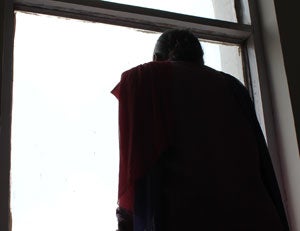by Angela Duger
“…it is victims like Pratibha and Gunjan whom we must keep in the forefront of our minds.”
 This is a story about two teenage girls, Pratibha and Gunjan, who lived in a remote village in Jharkhand, India. Pratibha was studying in a government school and dreamed of becoming an English teacher.
This is a story about two teenage girls, Pratibha and Gunjan, who lived in a remote village in Jharkhand, India. Pratibha was studying in a government school and dreamed of becoming an English teacher.
In 2008 the girls left their village with the promise of a job in Delhi, with a man named Ravinder Kumar Rathi. The families would receive regular remittances, Rathi said. He assured them that the girls’ new lives would be comfortable and safe. For the next six years, neither girl was heard from again.
This year FXB India with support from UN Women piloted a project called “Suraksha,” which translates to “prevention of trafficking.” It was through the FXB India Suraksha project that the organization first became aware of Pratibha and Gunjan’s story.
A staff member recalled meeting Gunjan’s family for the first time:
“I could easily make out the pain in her mother’s heart. Her moist eyes, hopeful of reunion, pleaded for her missing child. At that point of time, all we could offer was hope that our efforts would have a happy ending.”
Rathi ran an operation called the Goodwill Placement Agency. Once in Delhi, he separated the girls and hired them out as domestic workers. They were never paid. They lived in fear of him and were not allowed to contact their families.
Over the years, Pratibha found herself working in several different homes in three different states, subjected to physical and sexual abuse at the hands of her employers.
“Many times I thought of and even tried running away, but would wonder where to go, as I was not even not allowed to speak to my parents,” she told FXB India Suraksha. Eventually she was able to make contact with her brother, which led to her rescue.
FXB India Suraksh a, with support from the Jharkhand Police, was able to find and rescue both Pratibha and Gunjan this year. The girls, now 20 and 22, are back with their families. Pratibha has returned to school and is now in India’s equivalent of the eighth grade. But their journey is not over. The road to healing and reintegration into their communities will be a long one.
a, with support from the Jharkhand Police, was able to find and rescue both Pratibha and Gunjan this year. The girls, now 20 and 22, are back with their families. Pratibha has returned to school and is now in India’s equivalent of the eighth grade. But their journey is not over. The road to healing and reintegration into their communities will be a long one.
Rathi now faces numerous criminal charges, including murder and trafficking, relating to this and other cases.
Today, as we commemorate the 2014 International Day for the Abolition of Slavery, it is victims like Pratibha and Gunjan whom we must keep in the forefront of our minds.
Modern forms of slavery and slavery-like practices remain widespread. Modern slavery includes human trafficking, forced marriage, and the sale or exploitation of children, including for use in armed conflict, sex work, forced labor, and debt bondage. Trafficking of children for labor exploitation continues globally in significant numbers. Of an estimated 215 million children working illegally (U.S. Department of Labor 2011), 5.7 million are working in forced or bonded labor (ILO 2002).
The Program on Human Trafficking and Forced Labor at the FXB Center for Health and Human Rights is engaged in several research projects on human trafficking and forced labor in India. With FXB India Suraksha, we are conducting a research project on the rescue of children from forced labor and the reintegration of those children into their home communities.
FXB India Suraksha has extensive experience with victims of child labor, including operating India’s Childline in the Delhi region. Childline is a 24/7 toll-free emergency helpline for children in distress. It is considered a flagship program of the Ministry of Women and Child Development under the Integrated Child Protection Scheme.
We salute the hard work of NGOs like our partner FXB India Suraksha, who battle on the frontlines to effect change and make a real difference.
Photos: Namrata Raha, FXB India Suraksha
Angela Duger is a research associate at FXB, where she supports projects within the Program on Human Trafficking and Forced Labor. She also works on developing and maintaining the Health and Human Rights Resource Guide, published by the FXB Center and supported by Open Society Foundations.
Related content: Tainted Carpets: Slavery and Child Labor in India’s Hand-Made Carpet Sector
Sources
International Labor Conference, 90th Session. 2002. A Future Without Labour: Global Report under the Follow-up to the ILO Declaration on the Fundamental Principles and Rights at Work. http://www.ilo.org/wcmsp5/groups/public/—dgreports/—dcomm/—publ/documents/publication/wcms_publ_9221124169_en.pdf.
United States Department of Labor’s Bureau of International Labor Affairs. 2011. U.S. Department of Labor’s 2011 Findings on the Worst Forms of Child Labor. http://www.dol.gov/ilab/programs/ocft/2011TDA.pdf.
Note: The names of individuals in this story have been changed to protect their identity.

